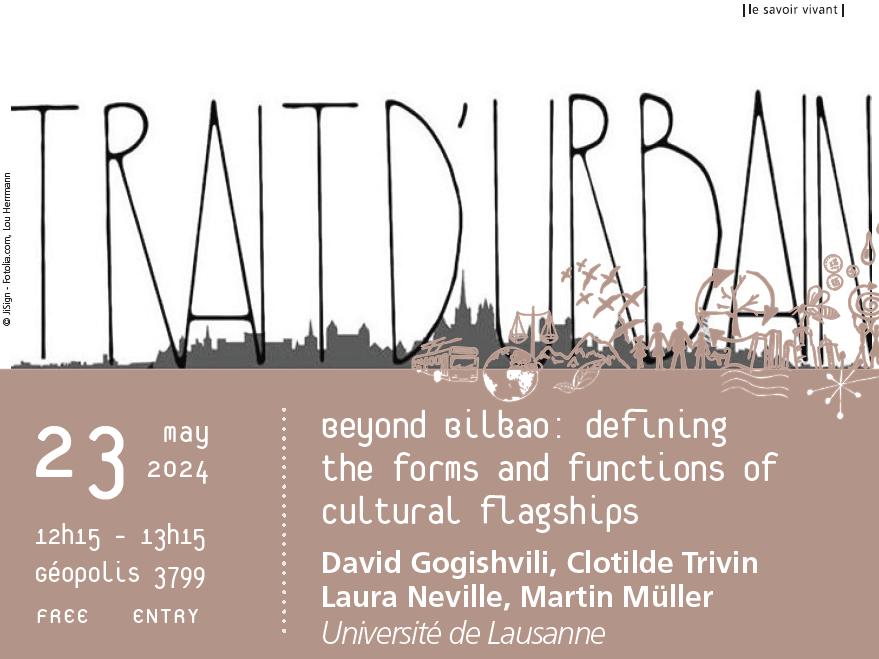English Français
Beyond Bilbao: defining the forms and functions of cultural flagships
As part of the « Trait d’Urbain » seminar

Thursday 23 May 2024 - 12h15 to 13h15
Géopolis 3799
As cities approached the post-industrial era and the need to regenerate decayed or develop newly integrated urban territories the role of culture in urban development grew further (Grodach, 2008). The perceived success of the Guggenheim Museum in Bilbao (Patterson, 2022; Plaza et al., 2009), catalysed the process where major cultural buildings have become a model for transforming urban futures. Beyond economic incentives, culture, similarly to sports, is often deployed for earning political capital as countries compete globally by deploying their cultural soft power (Giusti & Lamonica, 2023; Grincheva, 2020). These buildings are often referred to as cultural flagships, but there is no coherent understanding of what these interventions represent. The few existing studies are based on single case studies, often from the Global North, while the geography of cultural flagships has become increasingly global and globalised (Gogishvili & Müller, 2023)
With four in-depth case studies of the European Solidarity Centre (Gdańsk, Poland), KKL (Lucerne, Switzerland), the Louvre Abu Dhabi (the UAE), the Centro Cultural Gabriela Mistral (Santiago, Chile) and the database of up to 100 cultural flagships worldwide we define a cultural flagship along four dimensions: scale, iconicity, controversy, transscalarity. The approach adopted seeks to work towards a more pluralist, comparative way of doing urban theory (Peck, 2015; Ren, 2021; Robinson, 2016) navigating between the twin dangers of particularism and universalism (Elwood, 2009). Using this approach, we arrived at the following definition: a cultural flagship is a large-scale, often controversial, museum, library or performing arts centre with an iconic architecture, enmeshed in global circulations of imaginaries and expertise and anchored in the local politics of a city or region.
David Gogishvili is a senior researcher in the Department of Geography and Sustainability at the University of Lausanne. His research focuses on the role of large-scale urban development projects, such as mega-events and flagship cultural institutions, in cities around the world, using large databases and extended case studies.
Clotilde Trivin is a doctoral student in the SNSF project on ‘Cultural Flagships’ at the Department of Geography and Sustainability at the University of Lausanne. Her research examines large-scale cultural buildings as “material buildings”, exploring the ways in which the European Solidarity Centre (Gdańsk, Poland) is materially assembled, affectively experienced, and politically mobilised to make and unmake urban imaginaries.
Laura Neville is a Senior researcher in the SNSF project on ‘Cultural Flagships’ at the Department of Geography and Sustainability at the University of Lausanne. She is conducting research on the GAM cultural centre in Santiago de Chile to explore how cultural flagships become grounded in everyday imaginaries of violence.
Martin Müller is a professor in the Department of Geography and Sustainability at the University of Lausanne, Switzerland. He is interested in how rich cities attempt to become sexy cities. In other words: How do cities seek to convert economic capital into cultural capital by investing in cultural flagships such as museums, theatres, concert halls and libraries?
« Trait d’urbain » is a seminar series organised by the « Urban matters » research collective for researchers to present and discuss their work in progress.
Free entry.
Institut de géographie et durabilité